Since the 18th National Congress of the Communist Party of China, General Secretary Xi Jinping has inspected Shanghai multiple times, assigning Shanghai new missions, outlining a new blueprint for Shanghai, and requiring Shanghai to further play a leading role in the higher-quality integrated development of the Yangtze River Delta region and to do a good job in the integrated development of the Yangtze River Delta. As an innovative engine for the integrated development of the Yangtze River Delta, the G60 Science and Technology Innovation Corridor, with its collaborative development pattern of "one corridor and nine cities", has built a golden corridor of scientific and technological innovation covering Shanghai, Jinhua, and other cities. From May 6th to 8th, 2025, the Seminar on Engineering Project Management for Developing Countries, hosted by the Ministry of Commerce (MOFCOM) and undertaken by Shanghai Business School (SBS), organized 34 engineering officials and technical experts from 9 countries—Cuba, Grenada, Sri Lanka, Gambia, Fiji, Ethiopia, Palestine, Iraq, and Egypt—to visit Jinhua, Zhejiang Province, a key city along the G60 Sci-Tech Innovation Corridor. The school organized the participants to visit benchmark projects in the fields of new energy vehicles, digital economy, and technological innovation, showcasing the management wisdom behind China's high-quality development. The participants measured workshop floors with their footsteps, captured innovative details through their lenses, and filled notebooks with dialogues from Chinese technicians—these vibrant interactions became living annotations for developing nations exploring high-quality development.
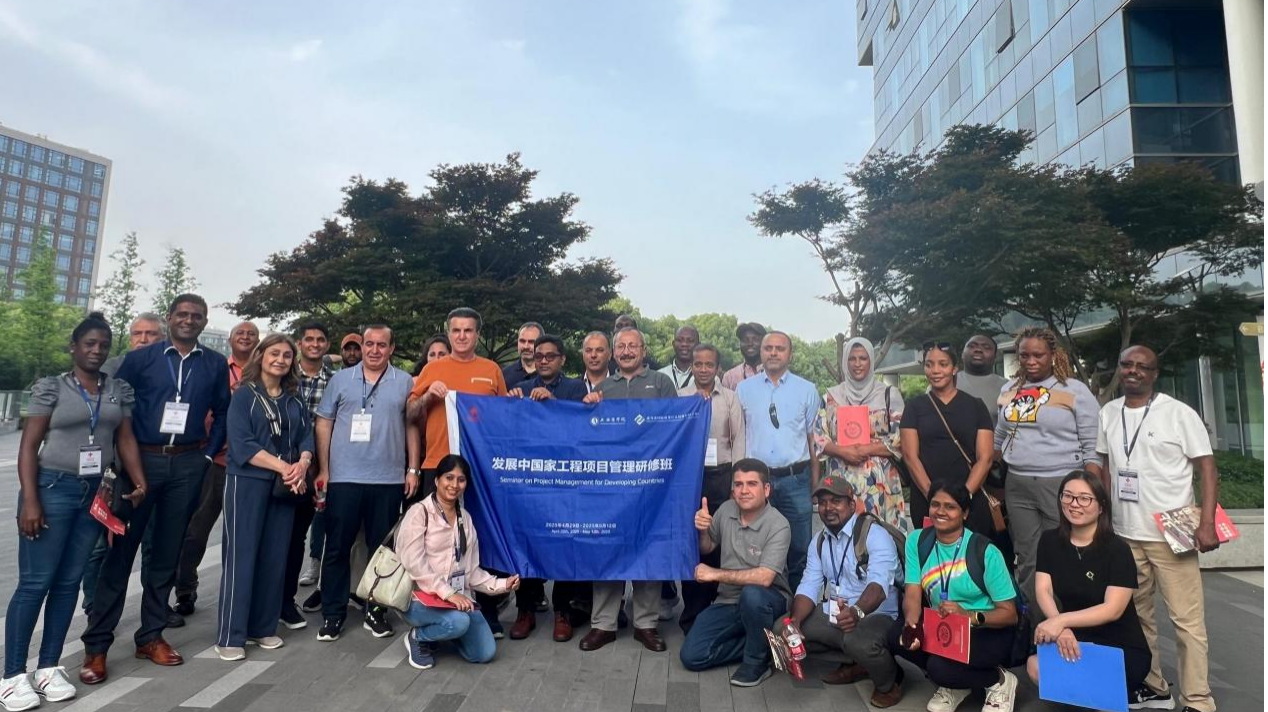
I. New Energy Vehicle Town: Observing Full-Chain Management through the Turning of Gears
As one of Zhejiang Province' first pilot projects for the integration of industry and city, the New Energy Vehicle Town, through its operating model of "industry chain map management + integrated innovation elements", has built a full lifecycle management system covering R&D design, intelligent manufacturing, and testing and certification. In the assembly workshop of Wanliyang New Energy Drive Co., Ltd., Mustafa, Chief Engineer of the Ministry of Transport and Infrastructure of Gambia, wearing gloves, touched a newly-off-the-line continuously variable transmission, repeatedly asking, "How does this system adapt to high-temperature and dusty environments?” When the technician called up the intelligent monitoring platform and displayed real-time transmission data from tests in the Sahara Desert, a collective gasp of amazement arose. This trailblazing company, which shattered foreign technology monopolies, shortened its R&D cycle by 40% in just three years. Witnessing this breakthrough, Abdul, CEO of Building Industry Development at the Ethiopian Ministry of Construction, couldn’t resist recording the entire process on his phone: "Our electric vehicle strategy is just taking off, and this pace of technological breakthroughs is exactly what we need to learn!”
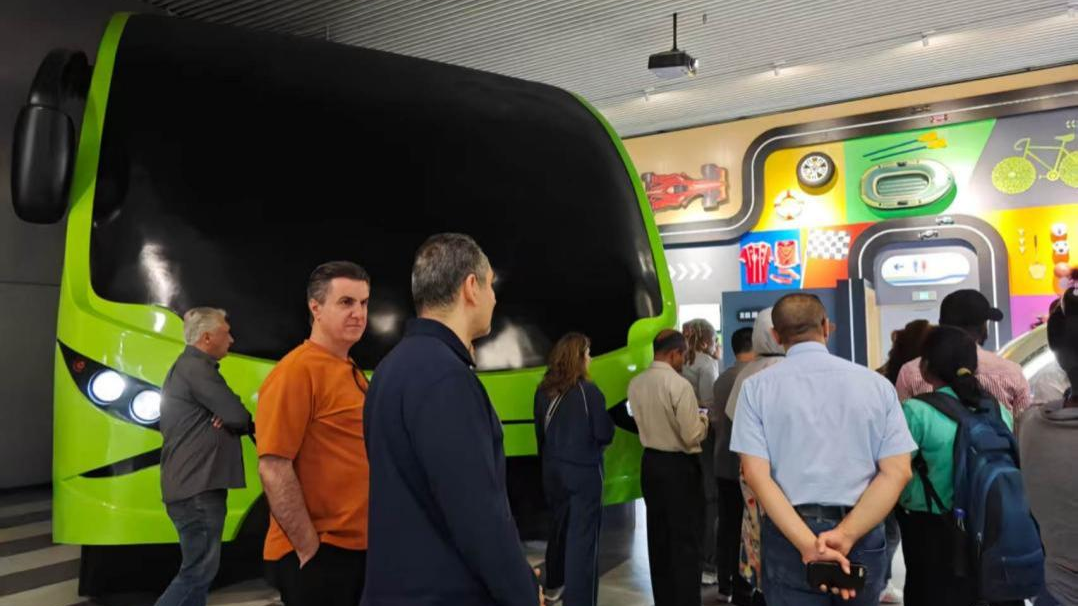
At the 3D car projection show in the town, Ridigahawatta, Deputy Director of the Project Management and Supervision Division of the Sri Lankan Ministry of Finance, raised his hand to ask: "How do you balance government subsidies and market mechanisms?” The project lead pulled up a digital “policy toolkit” on screen— from R&D tax credits to PPP models for charging pile construction—displaying 20 targeted measures. “So industrial policy can interlock like precision gears,” remarked Ratu, a mechanization specialist from Fiji's University of the South Pacific.
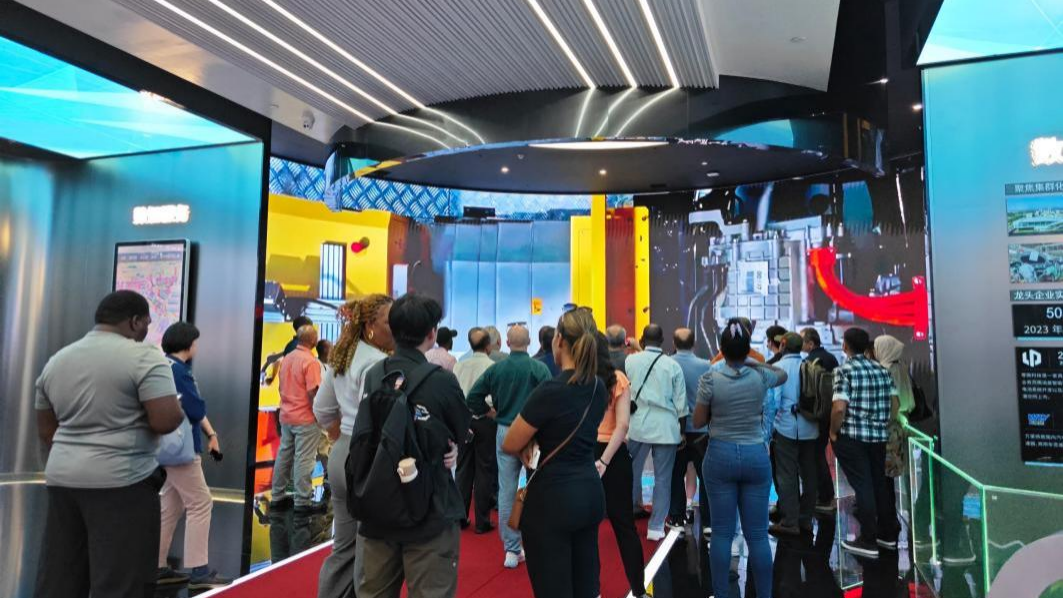
II. Central Innovation District (CID): The New Life Code in Old Factories
The Central Innovation District (CID) South Zone project, as a typical example of urban redevelopment of inefficient land use, innovatively adopts a "PPP + ABO" composite project management model, constructing a three-level management system of "government coordination—central enterprise implementation—market operation". Standing in the renovated steel structure exhibition hall, Salva, Deputy Minister of the Iraqi Ministry of Trade and Industry, gently tapped the wall: "Were these rust marks intentionally preserved?” Upon learning that the beam and column structures of the old factory building were strengthened and reused, saving 30% of construction costs, he turned to his colleagues and said: "Baghdad's abandoned factories can be reborn like this."
In front of the sand table model, Shanika, a regional factory inspection engineer from the Sri Lankan Ministry of Labour, used a magnifying glass to examine the city-industry integration model: "The design of the commercial area and the laboratory being separated only by a landscape river is ingenious!” When learning about the park's "tax rebate-for-performance agreements" to attract businesses—where qualifying firms enjoy rent reductions while underperformers pay the difference—she nodded emphatically: “This approach offers both flexibility and accountability.”
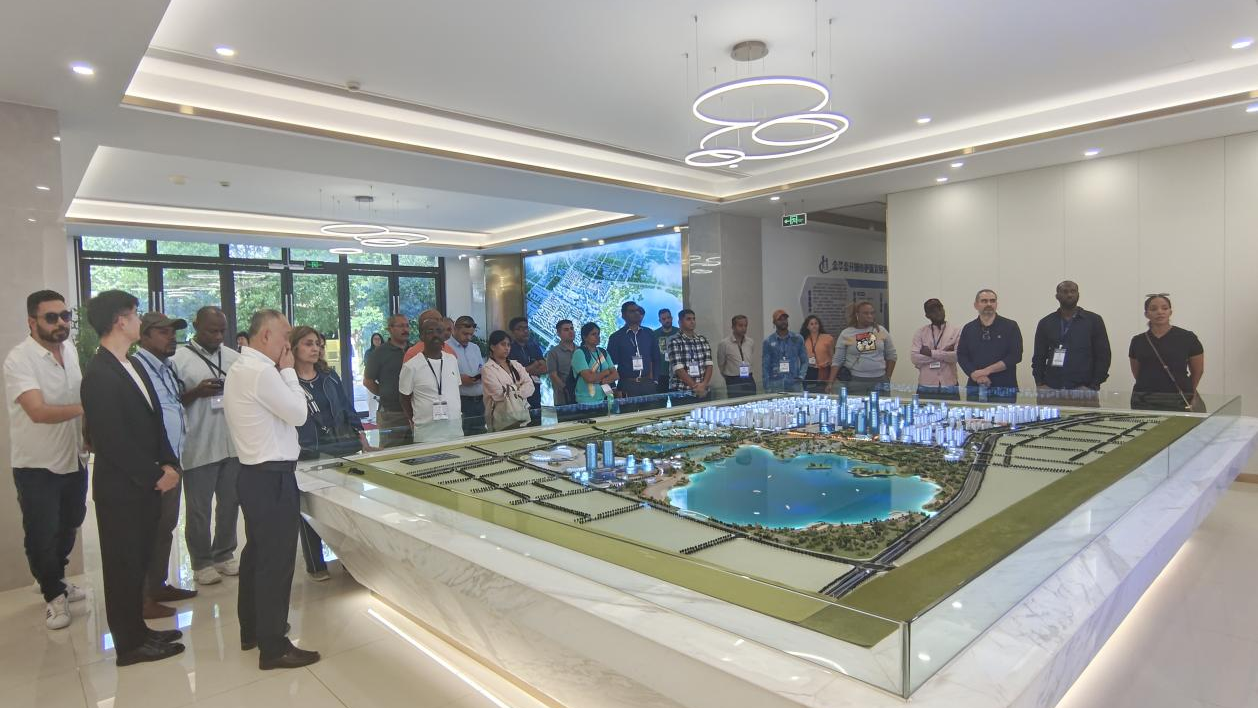
Standing before the screen displaying tax revenue per mu (a Chinese land measurement unit), Hammed, a member of the Egyptian Engineering Association from the Egyptian Delta Fertilizer Company, pulled out a calculator for quick conversions: “From 30,000 to 300,000 per mu? That’s a tenfold increase in land value!” He kept the investment officer in discussion until dusk: “If Cairo’s industrial zones adopted this evaluation system, we could reclaim at least 20% of underutilized land.”
III. Peking University Science and Technology Park: The Distance from Laboratory to Production Line
The Jinhua Peking University Science and Technology Park, jointly built by Peking University and the Jinhua Municipal Government, is a comprehensive science and technology park integrating scientific and technological innovation, enterprise incubation, commercialization, and talent cultivation. Relying on Peking University's advantages in scientific research, talent, and resources, the park focuses on emerging industries such as the digital economy, intelligent manufacturing, and biomedicine, providing full-chain services for innovative and entrepreneurial enterprises, assisting Jinhua City in industrial upgrading and high-quality development. It has distinct industry-academia-research characteristics and an international perspective, making it a highly valuable science and technology innovation park to visit. When seeing Peking University professor's studios sharing corridors with production enterprises, Ratu, a mechanization technology specialist from the University of the South Pacific in Fiji, suddenly realized: "So industry-academia-research cooperation isn't just physical proximity, but a chemical reaction!” At Runsheng International Company, he noticed customer orders next to beakers on the experimental bench. The technician explained with a smile: “Once samples pass testing, mass production begins immediately.”
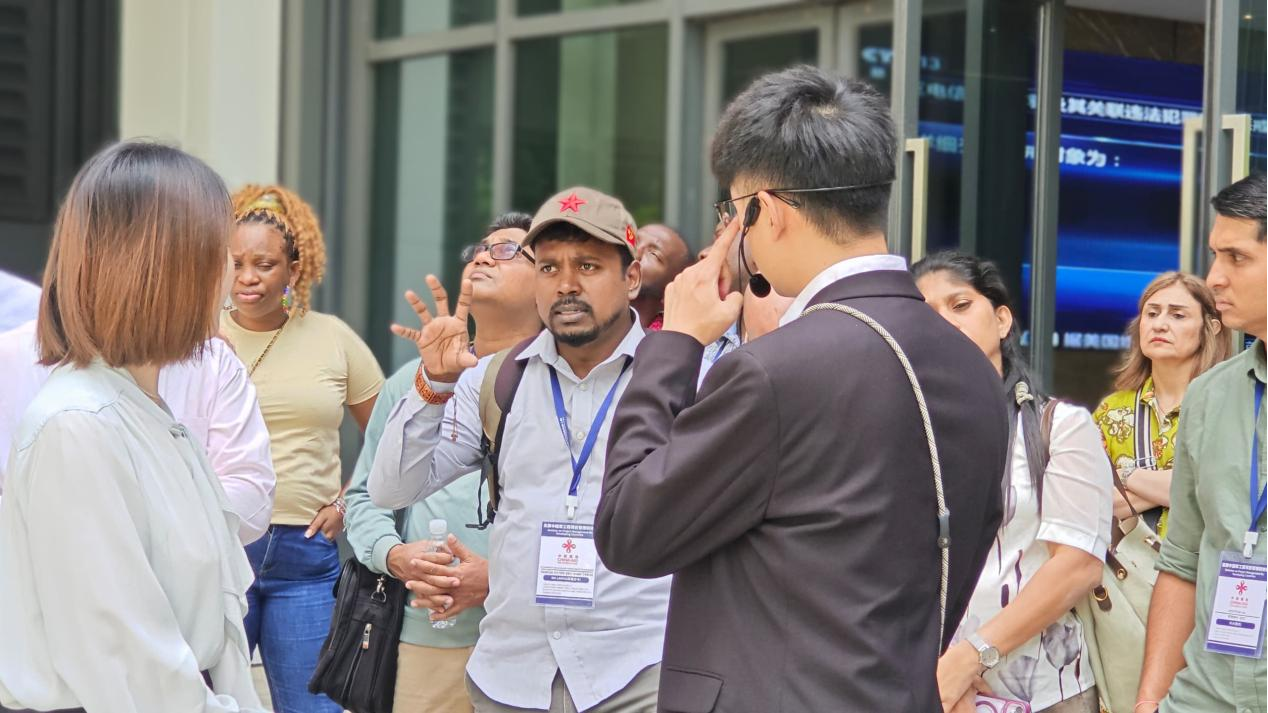
The textile materials exhibition area sparked a "selfie frenzy”. Mustafa, Chief Engineer of the Ministry of Transport and Infrastructure of Gambia, held the flame-retardant fabric and repeatedly rubbed it: “This texture feels nothing like fireproof material!” Learning that the product had been used in high-speed rail seats, he immediately proposed: "Can we develop a customized version using West African batik techniques? Our parliament building renovation needs this kind of fabric that is both safe and has cultural elements.”
IV. Jingying E-commerce Park: The Digital Revolution in Tomatoes
The Zhejiang Jingying E-commerce Industrial Park was transformed from the original Jinhua Cotton Textile Factory and began operation in February 2016. In 2022, it was recognized as a national-level science and technology enterprise incubator park. Over its nine years of operation, it has formed an industrial development ecosystem centered on the digital economy (e-commerce) and has become one of the industrial parks with the most enterprises in Jinhua City and one of the most concentrated e-commerce parks in Jinhua and Zhejiang Province. In the Fresh Food E-commerce Warehouse, Kamisha, a project assistant from the Grenada Transportation Commission, stared in awe at sorting robots: "How do they gauge the ripeness of tomatoes?” The engineer pulled up the AI vision system, and when the screen displayed data on sugar content and blemish detection, she exclaimed: "This is more advanced than our customs inspection equipment!"
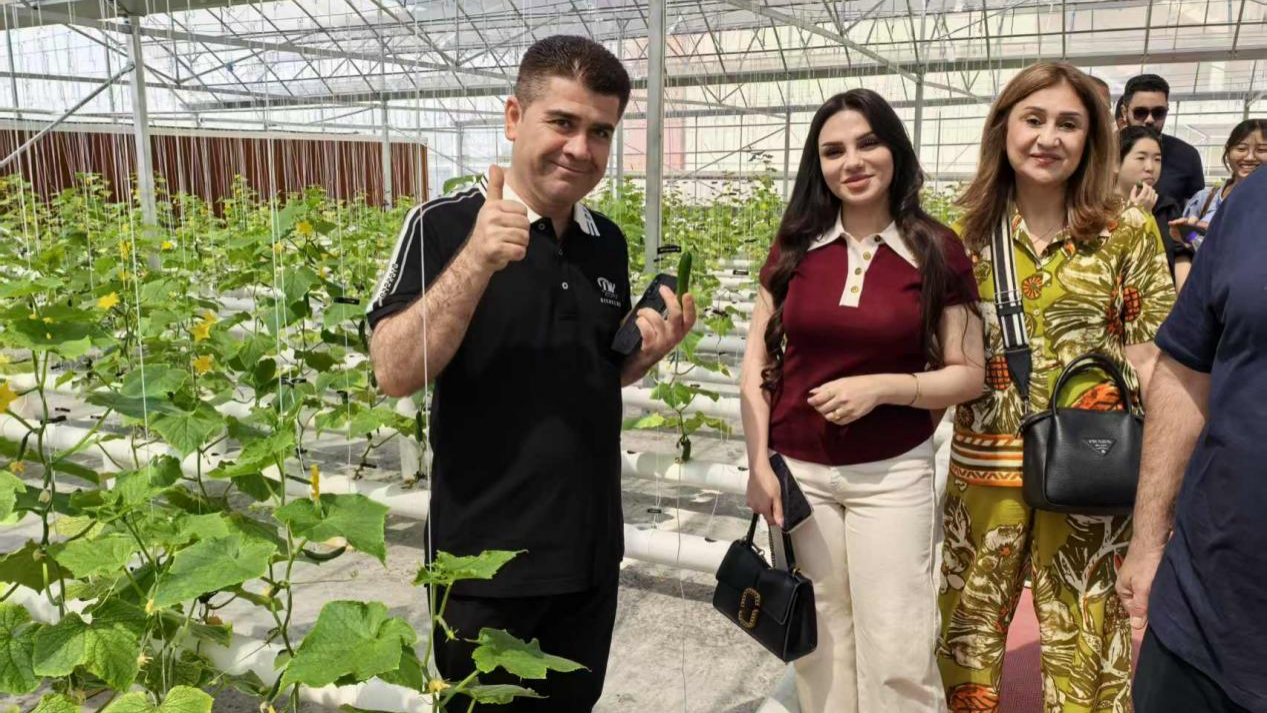
The tasting area has become a "classroom for the palate". After eating three cherry tomatoes in a row, Hammed, a member of the Egyptian Engineering Association from the Egyptian Delta Fertilizer Company, asked: “How do you ensure that every one of them is so sweet?” The technician took him to view the data stream from the soil sensors: "From PH value to light intensity, each parameter is controlled in real-time on the cloud platform." Salva, Deputy Minister of the Iraqi Ministry of Trade and Industry, was even more direct, holding a box of cucumbers and asking: “Can these be sold to Baghdad? We’ll grant tariff-free access!"

V. Heart of Jinhua: Management Wisdom Beneath the Scaffolding
The Heart of Jinhua is a key urban innovation complex developed by Jinhua City, Zhejiang Province. The project uses "technology + commerce + ecology" as its core concept, integrating digital economy, modern finance, and high-end business formats. It encompasses 5A-grade office buildings, star-rated hotels, commercial complexes, and talent residential apartments, serving as a core carrier for Jinhua City's construction of a "scientific and technological innovation center in central and western Zhejiang". The park has attracted regional headquarters of leading companies such as Ant Group and Huawei, forming a demonstration area for the integration of industry and city with a high concentration of innovative elements. At the construction site of Ant Group's regional headquarters, Yaenet, Development Director of GELECT (Group of Electronics, Computing, Automation and Communication Industries), pointed to the steel structure welds and asked: "What is the seismic resistance level of this process?” Upon hearing the answer "It can withstand an 8-magnitude earthquake," she immediately took a photo to record it: “The Caribbean region desperately needs this building standard."
In front of the sand table model, Mohammed, Director of the Quality System Department of the Palestinian Ministry of Industry, repeatedly pondered the ratio of commercial buildings to office buildings: "Our new area in Ramallah always has an excess of commercial space. How did you calculate this?” The planner called up the big data model: "Based on the population structure and consumption capacity within a 5-kilometer radius, the mall area has been reduced by 40% from the initial draft.”
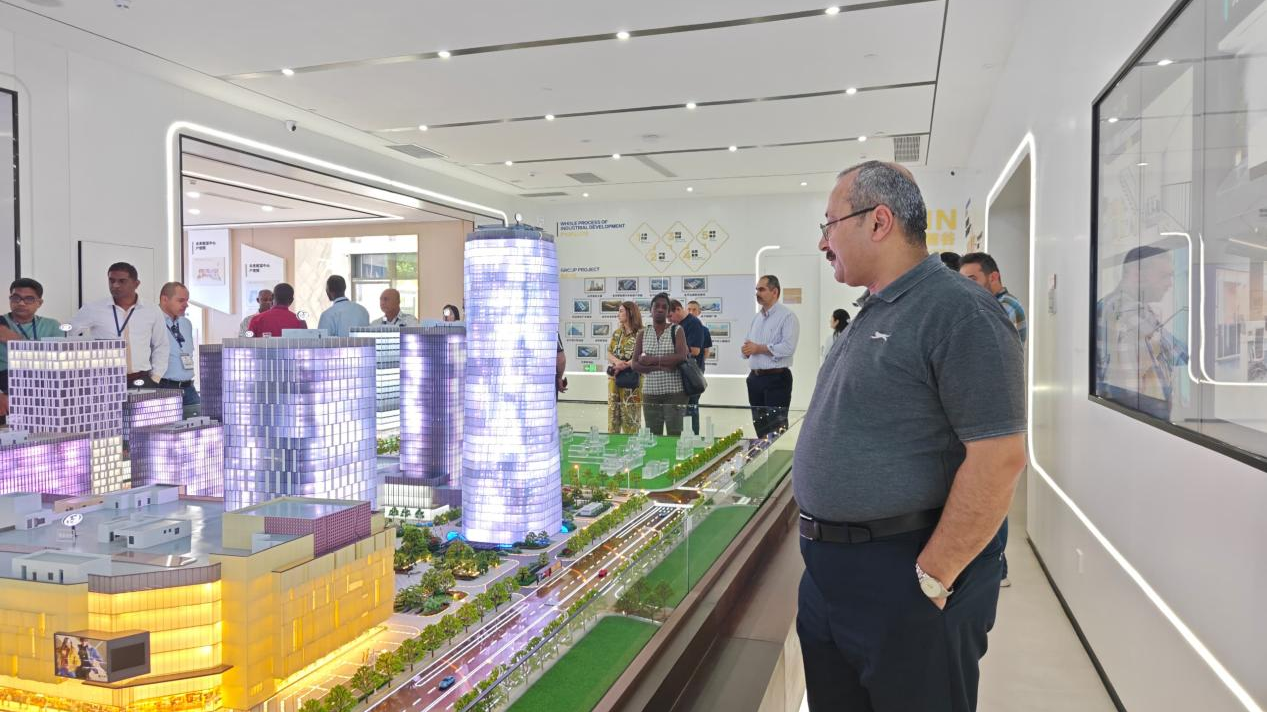
Epilogue
This seminar, with its diversified narrative of "classroom + field trip", vividly interprets the story of China's use of technological innovation to drive high-quality development. From Shanghai's international perspective to Jinhua's industrial practice, the practical experience of the G60 has important reference value for developing countries. The participants touched the pulse of China's development and spoke highly of their trip to Jinhua, believing it to be a very pleasant and fulfilling experience. The participants expressed their hope to apply the new technologies they witnessed during the visit to the development process of their own countries, contributing to their national development. Behind China’s "national brand" lies a development ethos of innovation, openness, and shared prosperity. To truly "tell China’s story well" requires not just showcasing achievements, but also transmitting replicable "China solutions"—injecting fresh momentum into global sustainable development.
Written by: Li Shuo
Photograph by: Guo Jiawei
Reviewed by: Chen Wei